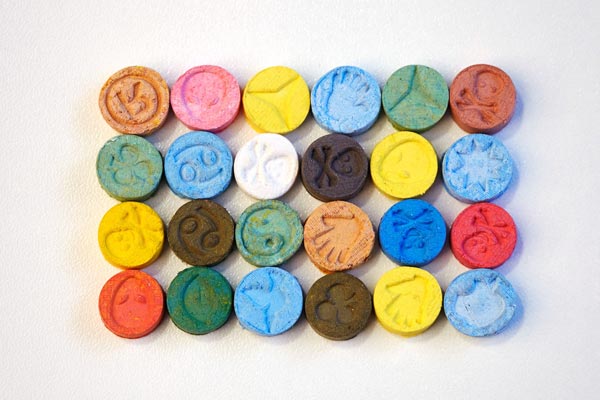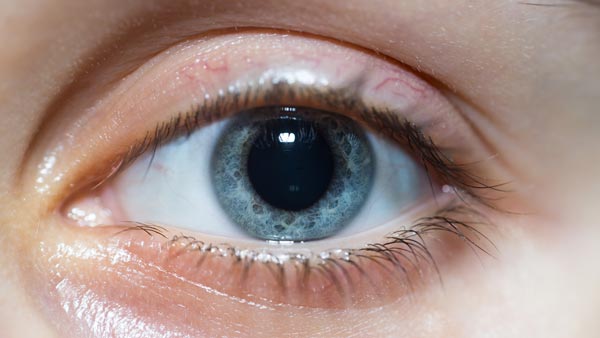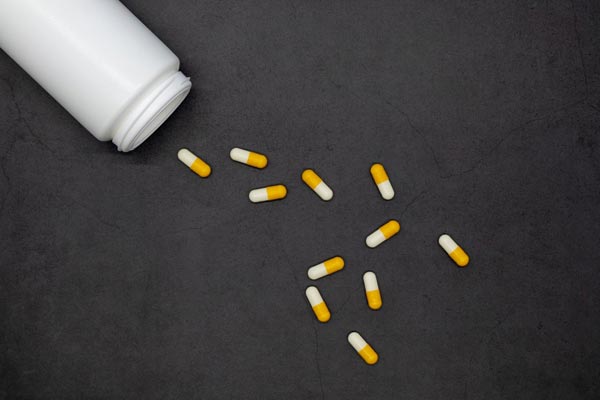Table of Contents
Molly, also known as MDMA or Ecstasy, is a popular but dangerous recreational drug. Using Molly is illegal in most places, including everywhere in the United States, and being a cause with Molly can come with serious legal consequences.
But, more important than the legal consequences for most users are the physical and mental consequences of Molly use. Drugs like Molly come with various potential side effects from any use, and the more you use, the more serious these consequences can become.
Remember, you don’t need to overdose on drugs like Molly to have serious side effects or life-long consequences from use.
Suppose you’re considering using Molly for the first time or are a current Molly user and want to learn more about the drug. In that case, it’s a good idea to learn more about how the drug Molly affects your brain and body, the side effects of use, the risks of addiction, and what you can do if you need help stopping.
This article is intended to provide information. In no way does this article endorse using Molly or any other drugs. Instead, we’re seeking to provide information about the drug Molly and recovery options for informational purposes only.
What Is The Drug Molly & How Does It Affect Your Brain & Body?
The first thing you need to know is what the drug Molly is and what kinds of impacts taking it can have. This section will focus on the physical mechanisms behind the drug Molly. In the next sections, we’ll discuss side effects, signs of addiction, and treatment options.
Molly is more properly called MDMA, and you might also be familiar with the other street name, Ecstasy.
Pure MDMA, when not mixed with other drugs that can increase potency or cause other physiological effects, impacts how your brain produces neurotransmitters.
Neurotransmitters are the basic communication tool of your nervous system. Different neurotransmitters affect your mental state, physical feelings, and mood.
MDMA increases the activity of three different neurotransmitters and may have a less potent effect on other neurotransmitters.
The three neurotransmitters MDMA impacts are Serotonin, Dopamine, and Norepinephrine. All three neurotransmitters are related to happiness, love, affection, and euphoria. Because of that, the drug Molly is known to create a feeling of euphoria, lower inhibitions, and increase the risk of risk-taking behaviors – especially things like taking additional drugs or having unprotected sex.
One of the problems with taking MDMA, beyond the risks of behavior changes while under the influence of the drug, is that your brain needs time to recover from the overload of neurotransmitters after the drug wears off.
That can leave users depressed and worse than before taking the drug for several days afterward, increasing the odds that they’ll take the drug Molly again to get back to that euphoric feeling and relieve their depression.
In addition to the effects on neurotransmitters, Molly can also make users feel extremely thirsty, which can lead to them drinking dangerous amounts of water. Molly can also be hard on your kidneys (partially because of over-hydration) and your liver – especially if you’ve used the drug consistently for a long time.
Side-Effects Of Using Molly
Now that you know a little about how the drug Molly works, let’s talk a little more about the side effects of the drug.
Before we begin, it’s important to understand that some of the most severe long-term side effects of the drug Molly are worse and harder to recover from the younger you are when you first take Molly.
This suggests that the effects on neurotransmitters and other bodily functions can interfere with normal brain and nervous system development, making Molly use before your brain has finished developing (at about 25) more impactful even than Molly use later in adulthood.
One of the most serious side effects of Molly use is that use can impair the function of your serotonin system when you’re not on the drug.
Lower concentrations of serotonin, as seen in long-term use of Molly and similar drugs, can be associated with increased feelings of depression and sadness and reduced feelings of happiness.
Essentially, the high concentration of serotonin and other neurotransmitters, which are perfectly fine and healthy in normal concentrations, becomes so high that they become toxic while using Molly. The damage from neurotransmitter toxicity impairs your brain’s ability to produce normal levels of those neurotransmitters while not taking the drug.
It’s not entirely clear how long these side effects last, but we know that the impairment can last at least several months after your last dose of Molly.
Additionally, Molly users risk a few acute side effects. Overdosing on Molly is rare, compared with other, more immediately toxic substances, but that doesn’t mean that Molly’s use is safe.
Two of the most prevalent and dangerous side effects of Molly are hyperthermia and hypernatremia.
Hyperthermia occurs because MDMA, or the drug Molly raises your body temperature. Combined with activity or low electrolyte concentrations in your blood, your body temperature increases well above safe levels.
Left untreated, hyperthermia can cause brain damage and can even be fatal. Seizures are a common symptom of hyperthermia caused by MDMA use.
Hypernatremia is another serious and potentially fatal side effect of Molly use, though the Molly itself directly causes it.
One of the side effects of Molly use is that you can become very thirsty – and thirst is more likely if you also have a fever or hyperthermia from MDMA use.
The problem is that users often overcorrect and drink too much water. Doing so can cause kidney damage, but the most dangerous problems happen when your body’s store of electrolytes becomes excessively depleted.
When electrolytes are depleted, water stops hydrating or helpful and becomes harmful. In severe cases, people have drowned as a result of hypernatremia. Worse, your brain can drown from blood thinning and improper transfer of oxygen and nutrients across the blood-brain barrier, and MDMA users may not realize there is a problem until it’s difficult to intervene.
For this reason, it’s important for anyone using MDMA to monitor body temperature carefully and to drink electrolyte-replenishing fluids like Gatorade or juice instead of plain water.
Even with precautions, taking the drug, Molly still comes with these risks and potential long-term side effects.

What To Do If You’re Addicted To Using Drugs
MDMA is an addictive substance, and you can get addicted to drugs like Molly in as little as a single dose.
Addiction poses a lot more risks than occasional use. Your risk of the most serious side effects of the drug Molly goes up both with regular use and with increasing your dose. Because regular use can lead to drug tolerance, most users increase their dose over time.
If you’re addicted, the first step is admitting to yourself that you’re dealing with an addiction.
The next thing is accepting that having an addiction doesn’t mean you’re weak or that there’s anything wrong with who you are. Chemical dependency happens for many reasons, and regardless of how you developed an addiction, that doesn’t mean you’re bad.
Many stigmas are associated with having an addiction, but you don’t need to carry that burden.
Instead, focus on recovery and accepting the past for what it is. Then, you can work on changing the future.
Usually, the first step toward actually treating addiction is talking with your primary care provider. They should have treatment options in your area.
Be prepared that your doctor may have questions about your addiction, how long you’ve been using, and how much Molly you take at a time. Those questions aren’t intended to shame you; your doctor needs that information to recommend the best care program for your situation and be better prepared to treat you in the future.
Your doctor also shouldn’t shame you about your addiction. If you feel like you’re being shamed or aren’t getting good treatment options, it’s okay to consult with another doctor for more advice and information.
Remember, the information you tell your doctor is confidential outside a few rare legal cases. You can be honest with your doctor without worrying that they will report you to the police.
Once you know what treatment options are available in your area, it’s your turn to research and figure out which options are best for you.
You can decide which options are best based on what takes insurance, which options will provide the most assistance and help through withdrawal and detox, which locations or providers seem most likely to be able to help, or even which providers you feel like you can trust.
Once you’ve decided what kind of treatment you want, you should reach out to providers for intake screening.
Most addiction treatment centers will have some requirements and screening questions to ensure they match you with the best possible program and have the expertise and treatment options you need.
Once you’ve cleared the intake, you may still have to wait for placement. This is because there are limited spaces in almost any addiction treatment facility to provide the best possible treatment to patients.
Remember, treatment is an ongoing journey, and recovery is the work of a lifetime, not a few weeks or months.
But most importantly, you are not alone in this.
Sources:
- National Institute on Drug Abuse. What are MDMA’s effects on the brain? National Institute on Drug Abuse. Published September 2017. Accessed November 27, 2022. https://nida.nih.gov/publications/research-reports/mdma-ecstasy-abuse/what-are-mdmas-effects-on-brain
- Buchert R, Obrocki J, Thomasius R, et al. Long-term effects of “ecstasy” abuse on the human brain studied by FDG PET. Nucl Med Commun. 2001;22(8):889-897. doi:10.1097/00006231-200108000-00007
- Mustafa NS, Bakar NHA, Mohamad N, et al. MDMA and the Brain: A Short Review on the Role of Neurotransmitters in Neurotoxicity. Basic Clin Neurosci. 2020;11(4):381-388. doi:10.32598/bcn.9.10.485
The Heights Treatment Editorial Guidelines
There is a vast amount of misinformation online especially as it relates to health & wellness. We have made it our mission at The Heights Treatment to provide accurate, medically sound content that has been medically reviewed by a doctorate level clinician so that you can trust the information contained within our website.





